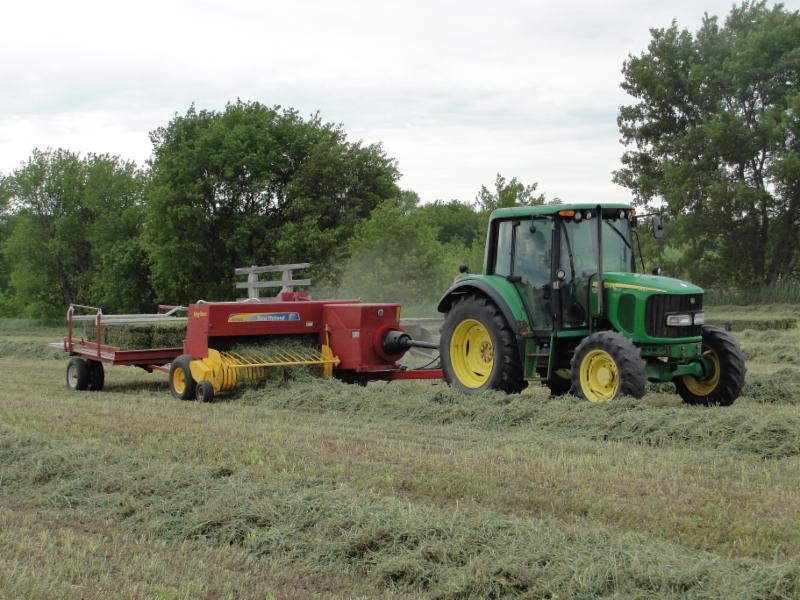Ask the Expert: Feeding Preservative Treated Hay

Photo Credit: Krishona Martinson, PhD, University of Minnesota
Question: Our regular hay supplier applied a preservative (propionic acid) to the bales this year. Is feeding preservative treated hay safe for my horse?
Answer: Preservatives are commonly used during times of frequent rainfall or poor drying conditions (e.g. high humidity or heavy dew). Propionic and acetic acids are commonly used hay preservative that are applied to hay as it is baled to allow baling of wetter than normal hay without spoiling during storage. Moisture at the time of baling is directly related to mold formation. Hay baled at ≤15% moisture is unlike to mold; however this is impacted by bale-type and mass. For example, small square bales can be baled up to 18% moisture with limited risk of mold formation; however, large round bales must be baled at ≤15% moisture to reduce the risk of mold formation. Preservatives are most effective at inhibiting mold growth, and most economical, when the hay is baled between 18 to 25% moisture.
Preservatives are safe for use in horse hay. Researchers found that when given a choice, horses preferred hay that was not treated with a preservative; however, horses readily consumed the treated hay when a choice was not given. Yearlings receiving hay treated with a preservative consumed and gained just as much as yearlings consuming untreated hay, and clinical measures of well-being were not affected by consumption of preservative-treated hay. Interestingly, a horse’s hindgut bacteria actually make propionic acid as a result of microbial fermentation.
Therefore, feeding horses hay treated with a preservative is a safe and common practice, especially in years when poor weather conditions exist for making hay, and helps to inhibit mold growth during storage.
